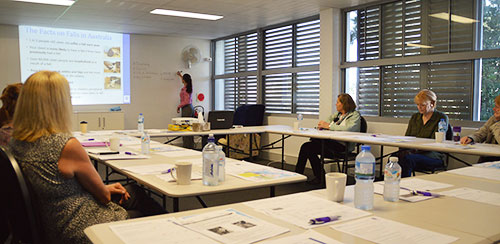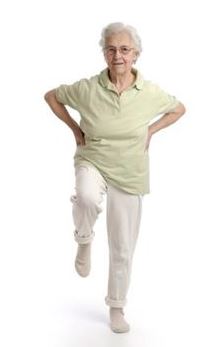How to reduce falls in Elders by 31% with the LiFE program

It’s important for Elders to avoid falls where possible because a fall can lead to reduced confidence & functionality, medical complications and even death. Our experienced Caregivers help reduce falls in Elders by 31% by incorporating the new LiFE program during our service time. Preventing and reducing falls leads to improved Elder safety and improved quality of life.
In Australia, about one third of older people (over 65 years) experience at least one fall a year and a person is more likely to have a fall if they have had one previously.
The most common causes of falls in Elders is due to poor balance, weak ankles and weak hips^. The good news is new evidence-based research from Sydney University has found the Lifestyle Functional Exercise Program (LiFE) reduced falls by 31%, proving that falls can be prevented.
In today’s society we are encouraged to continually find ways of doing less. We use remote controls; we have our groceries delivered; and we drive everywhere. Because of this we need to work harder to maintain our strength and balance. The old saying is even more true for Elders: “Use it, or lose it”.
At Daughterly Care, our experienced Caregivers have been trained in Elder Safety and Falls Prevention by incorporating the LiFE^ Exercise Program, created at the Faculty of Health Sciences, University of Sydney into the daily activities of our clients during our regular service times.
The physical activities in the LiFE Exercise Program have been designed to improve and maintain balance and build muscle strength in hips, knees and ankles. The program has enhanced our Caregivers’ abilities to re-enable their clients by strengthening their balance and making their muscles work harder. Our Caregivers have achieved this by incorporating balance and strength activities into everyday tasks during our care visit, making it part of our clients’ regular routine.
At Daughterly Care, it’s our goal to improve our client’s mobility one step at a time, reducing their risk of falls by 31%. Not only has the Sydney University research shown that the LiFE Exercise Program is effective, it is easy to incorporate the exercise into the daily living activities whilst Daughterly Care Caregivers are in the home providing care, improving our clients’ wellness, strength and overall safety.

Daughterly Care Caregivers have the complete kit to ensure they are assessing and taking into account each client’s individual needs by using Assessment Tools (for the individual) and Assessment Balancing Activities and can start clients on the appropriate level ranging from easy to difficult.
With some forms of Dementia, the individual’s ‘Starter Motor’ is damaged. So, where they once had self-motivation and physical strength, initiated their activities and maintained muscle strength, we find those Elders need to be prompted to start tasks and activities. Having Daughterly Care Caregivers in the home to encourage and promote physical activity reduces the impact of a damaged ‘Starter Motor’.
Fall Prevention for Elders
The LiFE Exercise Program evidence based research has proven to increase independence by allowing clients to stay mobile and live in their own homes longer.
Reported benefits that improve balance and strength from the LiFE Exercise Program are listed to the right:
- Walking improves
- Elder feels better
- Increased energy
- General duties around the house, such as household chores and picking up the groceries become easier for the Elder
- Staying independent and healthy for longer
Every Elder wants to avoid a fall. Having Daughterly Care looking after your Loved Ones with our LiFE Exercise Program reduces falls by 31% – this significant reduction in falls helps keep our Elders safe and living joyfully at home, for life – that’s the Daughterly Care advantage.
For more information on falls take a look at these pages.
Elders home safety and fall prevention
Preventing falls in the home
Elders Can Regain Confidence After A Fall with In Home Care
SA Coroner’s health warning about Elders falls in Nursing Homes
Elder Care Myth No.1- You HAVE to go to a Nursing Home
Bradley C 2013. Hospitalisations due to falls by older people, Australia 2009–10. Injury research and statistics series no. 70. Cat. no. INJCAT 146. Canberra: AIHW. Viewed on 9 March 2016: http://www.aihw.gov.au/WorkArea/DownloadAsset.aspx?id=60129542822
^Clemson, Fiatarone Singh and Munro 2007, Faculty of Health Sciences, The University of Sydney.
Gill T, Marin T, Laslett L, Kourbelis C & Taylor A 2009. An epidemiological analysis of falls among South Australian adults. Adelaide: Population Research and Outcome Studies Unit. SA Health.
Gill T, Taylor A & Pengelly A 2005. A population-based survey of factors relating to the prevalence of falls in older people. Gerontology 51:340–5.
